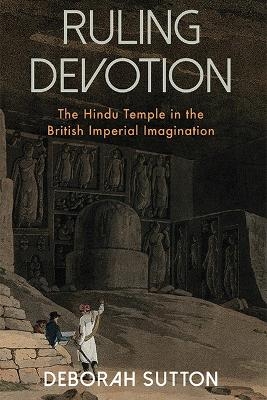
Ruling Devotion
State University of New York Press (Verlag)
978-1-4384-9920-8 (ISBN)
From 1800 onwards, the Hindu temple occupied a fragile and uneasy proximity to Imperial governance in India. The colonial state sought to regulate and extract the wealth of large temples. Imperial scholars classified the extraordinary diversity of architectural forms from across India, and selected temples were defined as monuments and brought into the custody of Imperial archaeology. Over time, the Imperial literary imagination transformed the Hindu temple from a place of worship and devotion into a space of wealth, sensuality, and violence. However, the Hindu temple also tested the Imperial state. Devotees and trustees manipulated and rejected attempts at governance, and the Hindu temple became a site at which the authority of the state was persistently modified or curtailed. Ruling Devotion combines historical, literary, art historical, and archaeological perspectives to explore the idea of the temple in particular localities, through the formation of pan-British-Indian policy and in the broadest of transnational realms of Imperial culture. Drawing on a huge range and diversity of archival materials, the book explores the preoccupations and frailties of the colonial state in India.
Deborah Sutton is Professor of South Asian History at Lancaster University. She is the author of Other Landscapes: Colonialism and the Predicament of Authority in Nineteenth-Century South India.
Images
Abbreviations
Glossary
Acknowledgements
Introduction
The Temple in Imperial Culture
Chapter Structure
1. Company Rule and Temples in the Madras Presidency, 1800–1841
Temples and the Topography of War
Hindu Temples as the Property of the Company Government
The "Accounts of the Church": Company Officers and Temple Revenues
Competition, Succession Disputes, and Company Adjudication
Assets, Accounts, and Corruptions in Temple Administration
Christian Missions and the Ejection of the Company from Temples
Conclusion
2. The Hindu Temple in Nineteenth-Century Architectural Scholarship
IntroductionText, Architecture, and Buildings: Ram Raz and the Recovery of the Hindu Temple
The "Stone Book": James Fergusson and Ethnographies of Architecture
Fergusson's Taxonomies of Temple Architecture
Self-reproduction and the Hindu Temple
Conclusion
3. Colonial Archaeology and the Idea of the Temple as a Monument
Temples as Monuments
The Temples of Bhubaneswar
Hindu Temples and Conservation
Conclusion
4. Siting and Inciting Shrines in the City of Delhi
The Shiv Mandir Dispute
The Cities of Delhi and Temples as Rubble: The Removal of Shrines
Creating Temples and Negotiating New Publics
Rumour and Divine Emergence
5. Dark Spaces and the Body: The Temple in Victorian and Edwardian Literature
Hinduism and the British Imagination
Victorian Adventures
Rudyard Kipling and the Hindu Temple
Gods in History: E.M. Forster, Civilisation, and War
E.M. Forster's A Passage to India
Conclusion
6. The World Mountain: Stella Kramrisch and the Hindu Temple
Stella Kramrisch and Indian Art
Kramrisch and the Hindu Temple
The Search for Acceptance: Stella Kramrisch, William Rothenstein, and British Art History
A Better Alliance: Kramrisch and the Warburg Institute Exhibition, 1940
Conclusion
Conclusion
Bibliography
Index
| Erscheinungsdatum | 22.08.2024 |
|---|---|
| Reihe/Serie | SUNY series, Studies in the Long Nineteenth Century |
| Zusatzinfo | Total Illustrations: 22 |
| Verlagsort | Albany, NY |
| Sprache | englisch |
| Maße | 152 x 229 mm |
| Gewicht | 227 g |
| Themenwelt | Geisteswissenschaften ► Geschichte ► Allgemeine Geschichte |
| Geisteswissenschaften ► Geschichte ► Regional- / Ländergeschichte | |
| Geisteswissenschaften ► Religion / Theologie ► Hinduismus | |
| ISBN-10 | 1-4384-9920-5 / 1438499205 |
| ISBN-13 | 978-1-4384-9920-8 / 9781438499208 |
| Zustand | Neuware |
| Haben Sie eine Frage zum Produkt? |
aus dem Bereich


